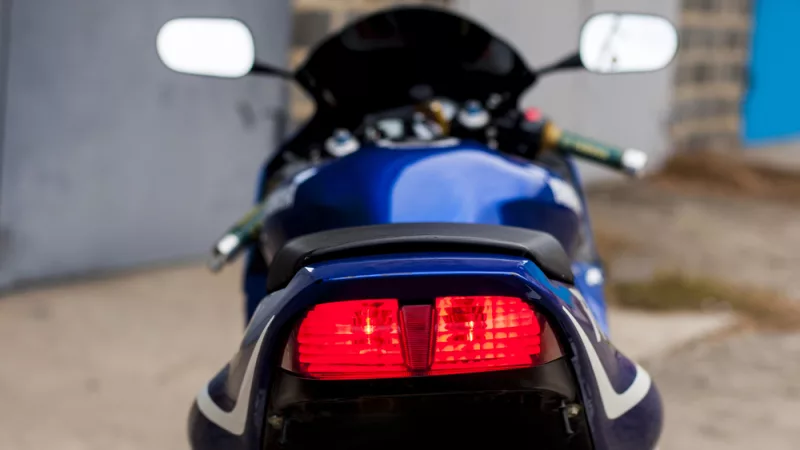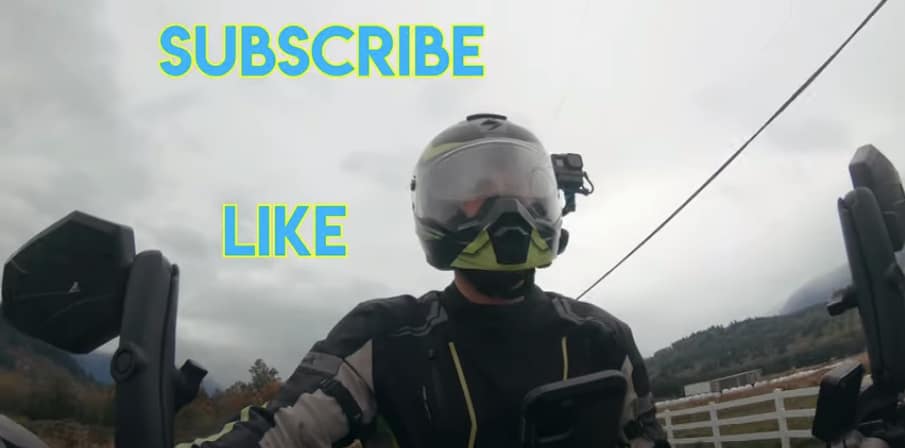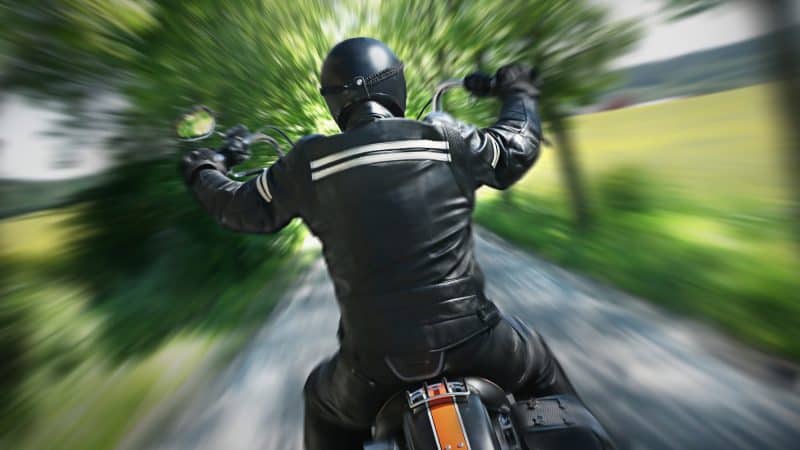An underrated aspect of learning how to ride a motorcycle goes beyond turning and popping wheelies. No, it’s something seemingly much more simple than that. Do you shift? Sure, shifting gears should be easy, because it’s a basic function; but shifting gear does have a layer of complexity that beginning cyclists could have problems mastering right away.
Here’s everything you need to know about shifting gears on a motorcycle.
Motorcycle Gears Basics
The three basic controls are ones that you might already know—the throttle, the clutch, and the gear selector. You use the throttle to rev the engine, the clutch to engage and disengage the brakes (transmission), and to select gears. For instance, if you pull the left hand clutch towards you, the engine revs without ever moving the bike.
The gear pattern can be clicked through by using the gear selector lever and is moved by your left foot. Most bikes have the following gears, starting with the lowest first:
• First gear
• Neutral
• Second gear
• Third gear
• Fourth gear
• Fifth gear
• Sixth gear (depending on the bike)
As you can see, shifting fears is sequential. Up or down, neutral (N) is always put between 1st and 2nd gear.
Technique For Motorcycle Shifting
It’s best to learn the proper technique required to maneuver through shifting gears before learning how to do anything else.
Steps of the proper shifting technique:
- Disengage the clutch. Use your left hand to pull it towards you.
- Select the correct gear by using your left food on the shifting lever.
- Slightly rev the engine if shifting up.
- Gradually release the clutch. Don’t pop it.
- Feather the throttle while releasing the clutch to accelerate smoothly.
- Continue revving if you which to switch to another gear in succession. Otherwise, find a nice cruising speed to maintain.
Shifting With Sound and Feel
Have you ever heard wailing motorcycle engines on the road? You’ve probably thought to yourself, “Is that rider even shifting?” That’s you using the basic rule of sound. In basic terms, if an engine starts to scream, you shift to an upper gear. If the engine starts to grumble, then shift the engine lower.
There a many methods to help you do this properly. Beginners should only focus on the simplest method. Afterwards, you can experiment.
Start off by riding in first gear. Try to sense to point when you need to switch to second gear. This means the engine isn’t yet screaming, but you are feeling the natural inclination to gain more speed. The clutch will disengage easily.
Should the engine start to scream, this means you’ve hit the red line, otherwise known as the built-in limiter. The limiter is placed in the engine to ensure the bike doesn’t overextend itself and burn up.
If you shift a gear up too soon, the bike could stall or choke. Restart the bike. Try again. Keep working through the gears until you can hear and feel when it is time to gear up.
Shifting Smoothly
You will notice that there’s no mathematical equation to figure out the “when” behind shifting. Every bike has a unique behavior that depends on how you handle it. For instance, if the bike jerks when you release the clutch, you’re being too abrupt. If the bike tends to lurch during shifts, you’re applying too much throttle. If the motorcycle’s speed dips during shifting, you need to rev the engine more between gear changes. Pay attention to the clutch, throttle, and gear selector, because these all interact and are dependent on one another.
Mechanics of Movement
Let’s back-up for a moment. Now that you have this idea in your mind that you need to listen and feel and understand with muscle memory what to do when shifting, it’s time to talk about what is happening inside the bike while you’re doing the actions.
The clutch is the first thing you touch when it’s time to shift gears, unless you have an automatic motorcycle or a quick shift. Once the clutch is engaged, meaning the lever is out and power is send to the rear tie, little springs press on the clutch plate that connect the primary drive to the part that rotates from the pistons going up and down.
When you pull the lever, the plate separates and releases the connection to the motor. In this moment, you can change gears.
That’s when you take your foot and move the gear selector. On the gear selector is a piece called a collar that has “dogs.” This dogs mesh together with the fork in the same way you interlace your fingers. When you move your foot up and down on the selector, the dogs and fork connect to help change the gear. Then, you find the right gear and accelerate.
Keep this in mind while reading the next two sections about upshifting and downshifting.
Upshifting
Most of this article has been devoted to upshifting. Upshifting is easier than downshifting, because you are accelerating. This means that if you do any of the steps of shifting a little too quick, there’s less of an impact. Of course, this could result in a sudden jolt of power to the rear wheel, causing the front tire to come off the ground.
(Note: You should only practice stunts in a controlled environment and when you have gained enough experience.)
Downshifting
On the opposite end of upshifting is downshifting, which tends to go a little less smoothly. If you release the clutch too quickly while downshifting, the sudden downward change can cause the gear to slow down the rear tire, compressing the front end, and causing a lack of traction in the back end. You need to be able to control the release of the clutch.
Be careful when rounding corners and decreasing your gears for this reason. You don’t want to suddenly lose traction right when you need more grip on the asphalt. That could cause the bike to skid to the side.
False Neutral
When downshifting, you could accidentally hit a false neutral. This can happen anywhere there shouldn’t be a neutral, including between 3rd and 4th or 4th and 5th and so on. This could happen if the dogs don’t connect with the fork when selecting gears. There is power loss to the rear wheel.
If you end up in a false neutral, pull on the clutch, and put the bike into a higher gear. You can prevent excessive damage to the bike. Be quick and make sure you move into the correct once you get out of false neutral.
With that, you should be able to master the basics of shifting. Practice the timing of the clutch release and working with the gear selector for a bit. You will soon be able to shift between gears like someone who has been riding for many years.
Liked this article and want more beginner motorcycle tips? Check out my YouTube channel and don’t forget to hit that subscribe button.
You Might also like
-
5 Letter Motorcycle Vanity Plate Ideas: Your Guide to Standout License Plates
Your motorcycle is an extension of your personality, a statement on two wheels. And what better way to personalize it than with a unique and eye-catching vanity plate? But coming up with the perfect 5-letter combination can be a challenge. Fear not, fellow riders! This guide will spark your creativity and help you find the ideal license plate to express your inner biker spirit.
Key Takeaways
- Unleash your individuality with a unique and personalized motorcycle vanity plate.
- Explore a variety of 5-letter ideas, from classic cool options to witty wordplay and location-inspired choices.
- Don’t forget to personalize it further with initials, birth year, or your biker nickname.
- Always check local regulations to ensure your chosen plate and bracket comply with safety and visibility requirements.
- Seek inspiration from online communities of motorcycle enthusiasts.
Comparison Table: Motorcycle Vanity Plate Ideas by Category
Category Example Classic Cool RIDER, SPEED, CRUISE Witty Wordplay BIKER, ZOOM, TWISTY Location Love [State Code], CANYON, COAST Personalized Touches Initials, Birth Year, Nickname Introduction: Unleashing Personality on the Road
Motorcycles aren’t just modes of transportation; they’re expressions of identity and freedom. A personalized license plate is a finishing touch that showcases your unique style, humor, or philosophy. This guide offers a collection of creative five-letter motorcycle vanity plate ideas, alongside tips for crafting your perfect plate. Whether you’re looking for inspiration or advice on how to secure your custom plate, we’ve got you covered.
Why Choose a 5-Letter Vanity Plate?
Five-letter plates are concise yet versatile, allowing for a wide range of expressions. They can spell out words, names, or acronyms that resonate with your personal story or your bike’s character. The brevity of these plates makes them easy to remember and recognize, adding an extra layer of personalization to your ride.
Top 5-Letter Motorcycle Vanity Plate Ideas
- RIDER – A straightforward choice that speaks volumes about your passion.
- SPEED – Perfect for the enthusiast who loves to push the limits.
- BEAST – For a powerful bike that commands attention.
- ROAMR – Embrace the spirit of adventure and the open road.
- TWIST – A nod to the twists and turns that make riding exhilarating.
- CRUISE – Perfect for relaxed rides and scenic journeys.
Witty Wordplay:
- BIKER – A straightforward and self-explanatory option.
- ZOOM – Captures the exhilarating feeling of acceleration.
- TWISTY – A playful reference to your love for winding roads.
- LEAN – Hints at your cornering skills (or aspirations!).
- SHIFT – A clever reference to the motorcycle’s essential gear changes.
Top 5-Letter Crypto Vanity Plate Ideas:
- HODL – A popular crypto term representing a long-term buy-and-hold strategy.
- SATOSHI – A tribute to Satoshi Nakamoto, the pseudonymous creator of Bitcoin.
- GWEI – The smallest unit of Ether, the cryptocurrency used on the Ethereum blockchain.
- MOON – A slang term expressing hope for a cryptocurrency’s price to rise significantly.
- FIAT – Refers to traditional currencies like USD or EUR, often contrasted with crypto.
Bonus Ideas:
- BTC – Abbreviation for Bitcoin, the first and most popular cryptocurrency.
- ETH – Abbreviation for Ether, the second-largest cryptocurrency by market capitalization.
- NFT – Stands for Non-Fungible Token, a unique digital asset representing ownership of something.
- DEFI – Short for Decentralized Finance, a financial system built on blockchain technology.
- MINER – Refers to individuals who use computers to validate cryptocurrency transactions and earn rewards.
Location Love:
- [State Code] – Show your state pride with a simple and bold choice.
- CANYON – For those who love carving through mountain passes.
- COAST – Perfect for coastal cruisers.
- RIVER – If scenic riverside rides are your jam.
- [City] – Represent your hometown or favorite riding location.
Personalized License Plate Ideas for Motorcycles
When it comes to personalized plates, the options are limitless. Consider using:
- Nicknames: An affectionate or cool nickname that defines you.
- Hobbies: Words that represent your interests or hobbies outside of biking.
- In-jokes: Something that only you and your riding buddies understand.
- Initials: A classic choice with a personal touch.
- Birth year: A unique way to incorporate a personal detail.
- Favorite number: If it’s lucky or meaningful, flaunt it!
- Model name: Show off your love for your specific motorcycle.
Motorcycle License Plate Ideas: Beyond Words
Apart from text, consider the aesthetic of your plate. Some regions allow symbols, which can help your plate stand out even more. For example, a heart symbol can replace the word “love,” or a number can substitute for its written form.
License Plate Motorcycle Bracket
Choosing the right bracket is as important as the plate itself. A bracket that complements your motorcycle’s style while securely holding your plate is crucial. Consider these factors:
- Material: Durable materials like stainless steel or aluminum resist rust and wear.
- Design: From minimalist to ornate, select a bracket that matches your bike’s aesthetic.
- Installation: Ensure the bracket fits your bike’s make and model for a seamless installation.
License Plate Ideas for Motorcycles: Making It Unique
Your license plate should be as unique as your ride. Experiment with:
- Numbers: Use numbers to represent letters or significant dates.
- Creative Spelling: Play with phonetics to create memorable plate ideas.
- Mix and Match: Combine letters and numbers for a plate that stands out.
Beyond the Plate: Mounting and Inspiration
Once you’ve found your perfect 5-letter combination, finding a license plate motorcycle bracket is crucial for proper mounting and legal compliance. Check your local regulations to ensure your chosen plate and bracket combination adheres to safety and visibility requirements.
For further inspiration, explore online communities and forums dedicated to motorcycle enthusiasts. You’ll find a treasure trove of creative license plate ideas, motorcycle customization tips, and a supportive community of fellow riders.
Remember, your motorcycle vanity plate is a reflection of your unique style. So, have fun, be creative, and ride safe!
Conclusion: Your Plate, Your Pride
A personalized motorcycle license plate is more than just a legal requirement; it’s a statement. It’s an opportunity to showcase your creativity, personality, and passion for riding. With the ideas and tips provided, you’re well on your way to choosing a vanity plate that reflects your unique spirit. Remember, the best plate is one that brings a smile to your face every time you gear up for a ride.
Explore your options, follow the regulations, and make your motorcycle truly yours. Ride safe, and let your personalized license plate tell your story to the world.
Personalized Plates in New Jersey
FAQs:
-
Can I use special characters in my vanity plate?
- It depends on your region’s DMV rules. Some allow limited use of symbols, while others restrict plates to letters and numbers only.
-
How do I check if my desired plate is available?
- Most DMVs offer an online service where you can check the availability of your desired plate.
-
Is there an extra cost for personalized plates?
- Yes, personalized plates typically come with an additional fee over the standard registration cost.
-
How long does it take to receive my personalized plate?
- Processing times vary by region but expect several weeks from application to delivery.
-
Can I transfer my personalized plate to a new motorcycle?
- Yes, in most jurisdictions, you can transfer your personalized plate to a new vehicle, subject to DMV procedures and fees.
-
The Ultimate List Of Motovloggers On YouTube Part II
Are you looking for motovloggers to follow?
Be sure to check out our other lists:
Shout Out To PhatboyR6 and No.Bumpers for helping me come up with this collection of motovloggers. So here they are in no particular order!
-
What Every Rider Should Know About Road Rash
Road rash isn’t a punchline to a joke about bad motorcycle handling or old video game. Road rash, also called “friction burn,” is a serious injury. The severity of the wound is measured by degrees, the same as you would a chemical or fire burn. Since the skin is the largest organ of our bodies, getting road rash opens you up to other vulnerabilities, such as infection. But there is more to understand about road rash than these points.
Let’s look at this serious injury that can happen to anyone and learn how to classify and treat various types of road rash.
The Different Types of Road Rash
Not every bout of road rash is created equal. There are three main types of road rash:
- Avulsion – the skin is scraped away. Sometimes fat, muscle, and even bone will be exposed.
- Compression – where the body is caught between two objects, such as the motorcycle and the road. This results in bruising, broken bones, and damaged muscle.
- Open wound – usually require stitches. Open wound road rash might even require skin grafting.
Aside from the 3 different types, there are 3 degrees of damage:
- First degree – the first layer of the skin is red. Does not require medical treatment and will heal well enough on its own.
- Second degree – the first layer of skin, known as the epidermis, is broken. There can be bleeding and debris stuck in the wound. Usually requires little medical treatment and can heal with no scarring or lasting damage.
- Third degree – skin has been peeled away, leaving tissue, fat and sometimes bone exposed. Victims often need skin grafting.
The degrees of the crash depends on factors such as the force of the impact with the ground, the type of surface where the crash takes place, and whether safety gear was equipped.
Road rash will often occur in places that come in contact with the abrasive surface, either when attempting to catch oneself or when rolling or getting dragged. The outside of the legs, knees, palms, thighs, shoulders, and face are usually where road rash occurs.
Complications of Road Rash
Seek medical treatment immediately if you experience any of the following with road rash:
- Severe pain
- Inability to move affected region
- Cuts on the face that are larger than a ¼ inch
- Cuts on the body that are larger than a ½ inch
- Bleeding doesn’t stop
- Gaping wound remains opened with you relax the body
- Fat is visible in the exposed tissues
- Road rash is paired with other injuries, including possible concussion or broken bones.
Any open wound should be treated with antibiotics within six hours. Otherwise, you are at risk of infection.
Treatment and Recovery From Road Rash
Depending on the severity of the road rash, you can oftentimes treat it yourself. In that event, do the following:
- Stop any bleeding.
- Wash your hands with soap and water.
- Rinse the wound thoroughly.
- Wash the wound with soap, water, and then use some witch hazel.
- Apply a topical antibiotic.
- Bandage the wound.
- Change the dressing.
Note: During the recovery, the skin will undergo healing from the deepest layers to the top. It might get scabs. Do not pick the scabs. Instead, continue changing the bandages and applying topical antibiotics. Once the oozing stops, you can use petroleum jelly to keep the skin supple and lessen the scarring.
If you end up going to the doctor because of a deep wound, the medical professional might recommend using ibuprofen, a non-steroidal anti-inflammatory drug (NSAID), acetaminophen, or naproxen to deal with the pain.
Remember that because the skin has been opened by abrasion, you could be at risk for infection. Consider getting a tetanus shot. Tetanus boosters last 10 years, so if you had an injury where the epidermis or dermis of the skin has been injured, tetanus bacteria can enter the wound. At any time symptoms of infection begin, such as redness, swelling, warm or hot skin around the injury, tenderness, pain, or bloody ooze or yellowish pus, you could have an infection. Make sure to get to a doctor immediately.
Hopefully, you should now have an understanding of road rash and how serious it can be. Don’t ignore severe injuries after a fall. Drive safe and stay safe, so you can keep riding!










2 comments on Beginner’s Guide To Shifting Gears On A Motorcycle